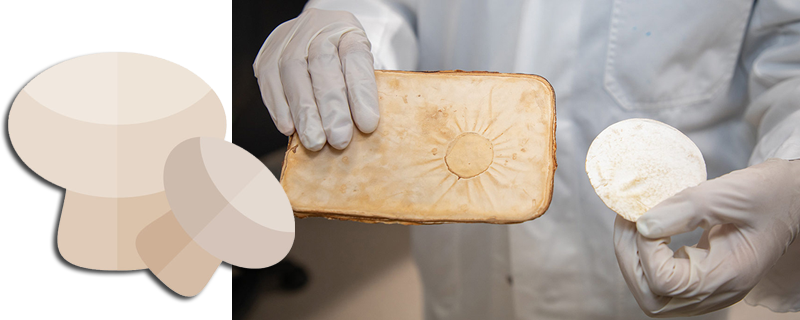Flat sheets of a fungal material could provide a safe and sustainable new way to fireproof buildings, according to researchers.
The panels, developed by a team at RMIT University in Melbourne, Australia, are made of mycelium, a network of fungal strands that can thrive on organic waste and in darkness.
Touted in recent years as a solution to countless problems, from chemical pollution to biological control of asthma-causing house-dust mites, fungi’s latest application could be in construction thanks to the work by the RMIT researchers, who chemically manipulated its composition to boost its fire-retardant properties.
The mycelium can be grown from organic waste, said associate professor Tien Huynh, a specialist in biotechnology and mycology. “Fungi are usually found in a composite form mixed with residual feed material, but we found a way to grow pure mycelium sheets that can be layered and engineered into different uses – from flat panels for the building industry to a leather-like material for the fashion industry,” she said.
The team created paper-thin, wallpaper-like sheets using what they described as a “novel method” that works without pulverising the mycelium’s filament network. Instead, they used different growth conditions and chemicals to make the thin, uniform and fire-resistant material.
The researchers are focused on creating bio-derived, fire-retardant cladding for buildings, which they hope could help prevent tragedies like the Grenfell Tower blaze, which was accelerated by a highly combustible cladding component.
The mycelium has strong potential as a fireproofing material, said associate professor Everson Kandare, a specialist in the flammability and thermal properties of biomaterials and co-author of a paper on the work.
“The great thing about mycelium is that it forms a thermal protective char layer when exposed to fire or radiant heat. The longer and the higher temperature at which mycelium char survives, the better its use as a fireproof material,” said Kandare.
Mycelium-based cladding is also not harmful to the environment when burned, he added. Composite cladding panels usually contain plastics, which produce toxic fumes and heavy smoke when they burn.
“Bromide, iodide, phosphorus and nitrogen-containing fire retardants are effective, but have adverse health and environmental effects. They pose health and environmental concerns, as carcinogens and neurotoxins that can escape and persist in the environment cause harm to plant and animal life,” said Kandare. “Bio-derived mycelium produces naturally occurring water and carbon dioxide.”
The work could lead to improved and eco-friendly cladding for buildings, the researchers claimed.
“Plastics are quick and easy to produce, whereas fungi is slow to grow and relatively harder to produce at scale,” said Huynh. “However, we’ve been approached by the mushroom industry about using their fungal-incorporated waste products. Collaborating with the mushroom industry would remove the need for new farms, while producing products that meet fire safety needs in a sustainable way.”
The researchers are now looking to create fungal mats reinforced by engineering fibres to delay ignition, reduce flame intensity and improve their fire safety ranking.
The collaborative project also involves the University of New South Wales, the Hong Kong Polytechnic University and the Australian Research Council Training Centre in Fire Retardant Materials and Safety Technologies.
The work was published in Polymer Degradation and Stability. It builds on preliminary research published by experts in the same journal and Nature’s Scientific Reports.
Source: Institute of Mechanical Engineers





Leave a Reply
Want to join the discussion?Feel free to contribute!